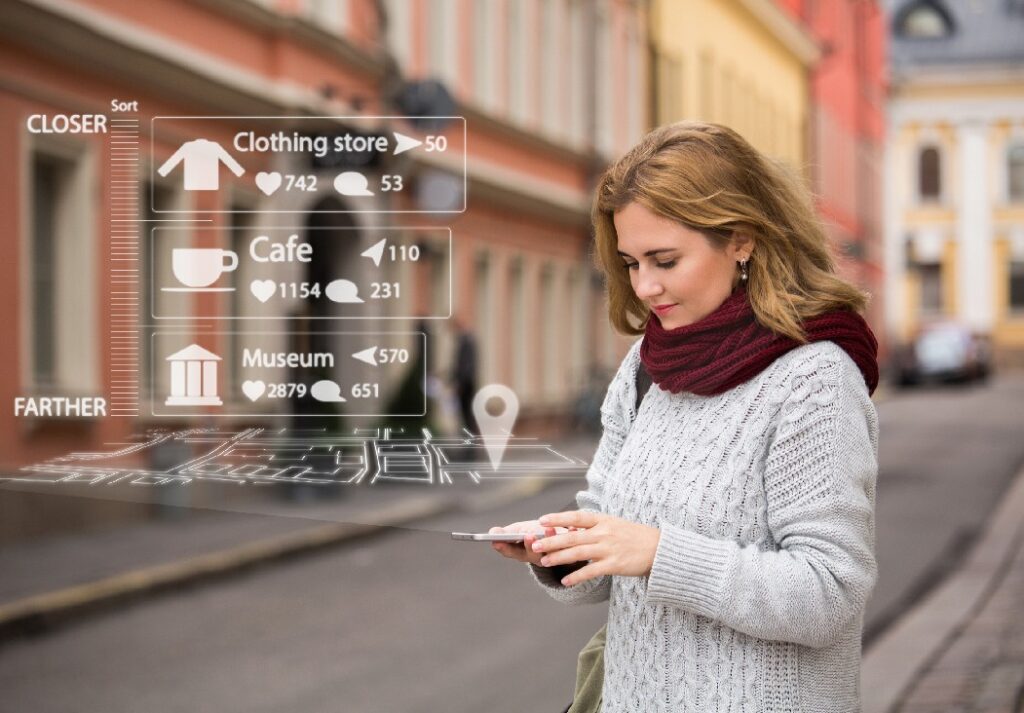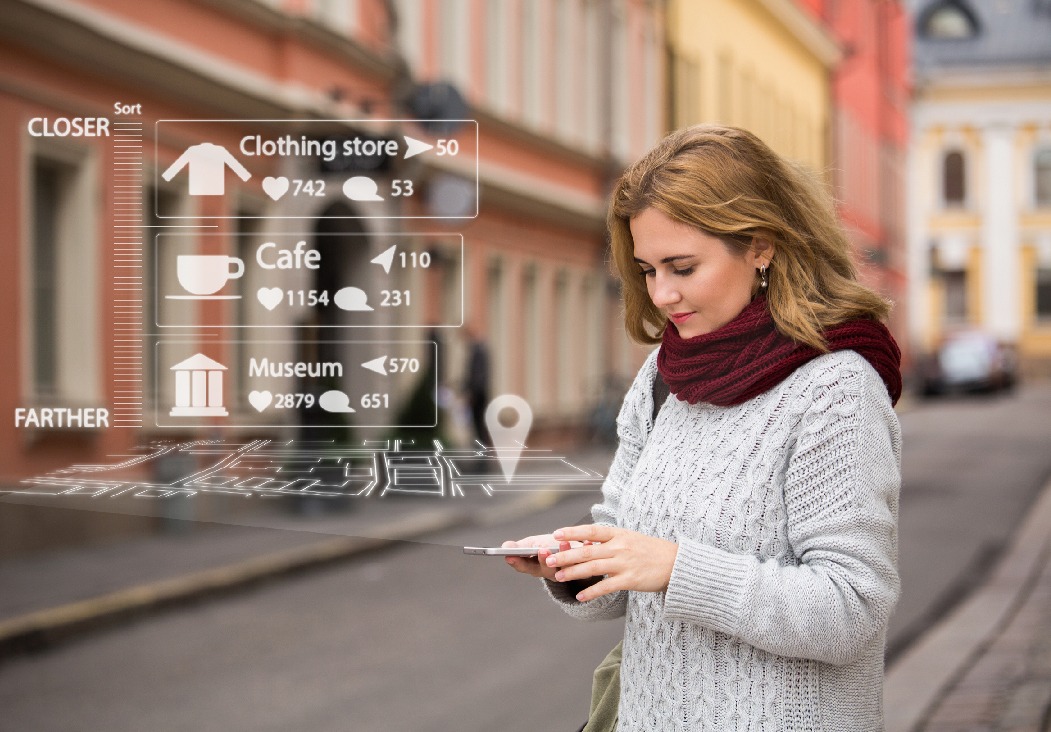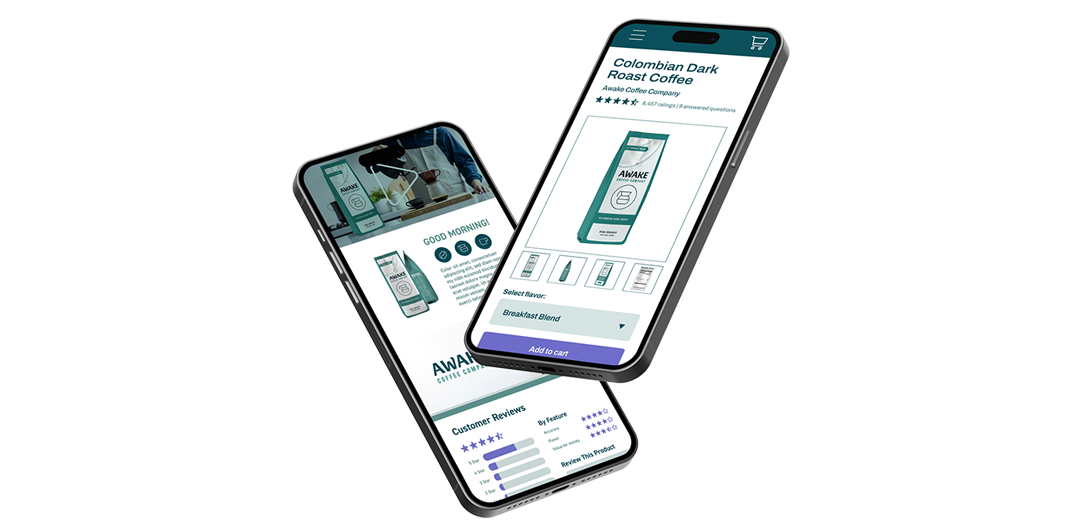While augmented reality has been in the mainstream market for a few years, the industry took off in 2020 due to restrictions brought about by the pandemic. AR offers convenience, efficiency, and accurate information to both businesses and end-users alike. In this article, we outline seven trends shaping the augmented reality industry in 2023 and how you can capitalize on this growing sector.
What is Augmented Reality?
To begin, let’s define augmented reality. In short, AR is a type of technology that superimposes a computer-generated image on a user’s perspective of the real world. It provides an interactive experience of a real-world environment enhanced by virtual objects. Typically, users interact with AR via smartphones, but other emerging technologies utilize AR by other means.
Augmented reality is not to be confused with virtual reality. Virtual reality requires a headset device and is completely virtual with no real-world visual interaction or overlay. AR is more accessible than VR technologies because users can take advantage of AR on their phones.
Now that we’ve defined terms, let’s explore the trends shaping the AR industry.
7 Trends Shaping the Augmented Reality Industry
1. Augmented Reality User Manuals
Many businesses are exploring new possibilities offered by AR user manuals. This technology provides immersive, engaging, and effective guidance for users and employees, replacing old paper manuals of the past.
When something breaks or isn’t working quite right, you could pore over an instruction manual or product handbook to find the solution. But that requires a lot of time and a lot of troubleshooting. And at the end, you might not even address the correct issue! But AR completely changes how we approach user manuals.
Augmented reality manuals display instructions, prompts, and content when a user’s camera is pointed at a piece of equipment or a device. These manuals deliver instructions, guidance, and content visually and in real time. Users no longer interpret written data to make repairs or troubleshoot. Instead, AR manuals provide specific instructions to users, increasing first-time repair rates; reducing downtime; improving productivity; and assisting in installation, repair, maintenance, and troubleshooting.
As more companies implement AR user manuals, we expect the landscape of device repair and maintenance to shift, becoming more user-friendly than ever before.
2. Virtual Try-Ons
The pandemic forever altered consumer shopping habits. Between 2019 and 2020, e-commerce sales jumped up 44 percent as shoppers stayed home and bought online. Many businesses have adopted AR technology to provide their customers with an in-store experience from the comfort of home.
AR technology allows stores to provide virtual try-ons to their shoppers. Because many people are maintaining their switch to online shopping, they don’t have the opportunity to see how they look in clothes, glasses, or makeup, or other items consumers have traditionally purchased in-person.
Warby Parker implemented AR a few years ago, giving customers a snapshot of how they’ll look in a pair of frames. Warby Parker’s app overlays glasses onto a user’s face, allowing the eyewear company to grow their e-commerce business with low return rates and high customer satisfaction.
Sephora was another early adopter of AR technology. In addition to showing users how they’d look in Sephora products, the app offers makeup tutorials that overlay the result on the user’s face. Both Sephora and Warby Parker brought AR into the mainstream and defined how augmented reality influences the retail world.
Today, the virtual try-on trend continues and is shaped by consumer desires. Body enhancement and tracking simulates the movement of clothes while the shopper wears them. AR try-on tech provides more than a product; it delivers the shopping experience consumers want. It makes shopping more convenient and enjoyable for consumers, leading to higher sales and increased lifetime value that results from satisfied customers.
3. AR and AI
This year, augmented reality merges with artificial intelligence to produce new immersive experiences for businesses and users alike. AI applications enhance AR tech to create more effective and efficient uses of the technology.
Google Translate is a popular example of AR/AI functionality. The app captures text within your phone’s camera frame, translates the text to the language of your choice, then overlays the translation in the image on your phone. Users see the real-world image as AI technology completes translation services in near real-time.
As both AI and AR technologies advance, we look forward to the continued merging of the two technologies and their respective industries. AI has the potential to enhance and improve the augmented reality functions businesses and end-users enjoy today.
4. Greater Accessibility and Lower Costs
Over the last few years, the AR industry has become part of many people’s everyday lives. The advent of the smartphone combined with industry innovation has brought AR into user’s homes and hands. Augmented reality tech is accessible to anyone with a smartphone.
Advancements in the AR industry have driven costs down while increasing the quality of the product. Businesses employing AR –– as well as their target customer –– reap the benefits of tech innovation. End-users enjoy a high-value product that’s accessible and reflects positively on the brand employing the tech.
Businesses utilizing augmented reality convey authority, relevance, and professionalism, all while giving customers a high-value experience with their brand.
5. Augmented Reality Preview Placement
Augmented reality preview placement is the virtual try-on for your home. IKEA might be the most notable name in AR preview services. The home furnishing giant utilizes AR in their app to place digital pieces of furniture in user’s homes. A customer uses their phone’s camera to capture their space. After selecting a piece of furniture from the app’s catalog, the user virtually places furnishings in their space. This feature allows customers to determine if a piece fits their lifestyle and their home.
Because AR preview tech gives shoppers the ability to view products in their home, businesses enjoy a reduction in return rates. Customers know they aren’t wasting time or resources buying goods only to return the products because they didn’t fit the aesthetic, size, or style of the space.
In 2023, we can expect to see more companies utilize AR product placement. AR placement technologies are advancing, making preview placement functionality available to more companies and users than ever.
6. In-Store Navigation
AR technology allows shoppers to navigate retail stores with ease. From mega malls to individual stores, consumers use AR to map out their shopping.
Retailers post visual AR-markers on walls or floors that consumers can scan into an app as they enter the building. The app displays paths to the stores or aisles the user selects. AR navigation provides convenient, precise navigation for shoppers, giving them a shopping experience they can control.
Augmented reality blends online and in-store experiences, bridging the gap for customers. When they utilize AR store navigation, shoppers enjoy a time-saving experience, similar to online shopping. Plus, users feels comfortable and confident when they use in-store navigation, increasing sales and customer retention.
7. 360-Degree Marketing
Businesses use spin capture technology, or 360-degree imagery, to give potential customers a complete picture of the products they offer. This all-encompassing marketing strategy has evolved to include 360-degree video wherein customers can become fully immersed.
E-commerce is dominating the retail industry, especially since the onset of the pandemic. As a result, businesses must restructure their marketing efforts to see success in today’s omnichannel market. Implementing AR functionality into marketing campaigns immerses your customers in your brand. AR engages in a more intimate, personal way than ever before by bringing your products into your customers’ homes via their smartphones and computers.
When marketing with a focus on augmented reality, image and video quality determines the efficacy of your campaigns. Roughly 60 percent of shoppers say poor or misleading e-commerce content was the reason for a return or refund. 1WorldSync provides your company with innovative image capture services that give customers a 360-degree view of your products. 1WorldSync’s photography team captures the best-quality product images that engage consumers, provide accurate information, and drive sales across all channels where your brand is present.
Conclusion
By utilizing augmented reality in your branding, marketing, and services, you set yourself apart from your competitors. At the same time, you provide a unique, valuable service that benefits customers. But to make the most of AR in your marketing, you need to work with a company that provides proven solutions.
1WorldSync is your source for digital catalog tools to modernize your marketing and sales. The 1WorldSync team will work with you to implement applications that capitalize on the augmented reality industry trends happening in 2023. Contact us today to see how we can make AR work for your brand.






